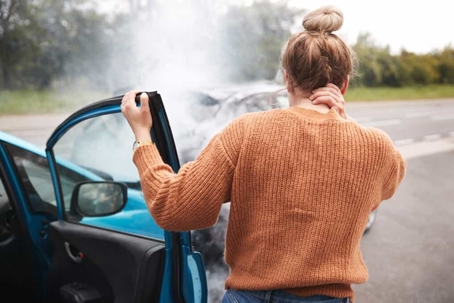Rideshare services like Uber and Lyft have become increasingly popular in recent years. In fact, they’ve become so popular that most taxi cab companies have virtually gone out of business.
It’s important to know certain details about rideshare services, as they are not exactly the same as the taxi industry. One very important distinction is how the drivers are insured.
Taxi drivers are required to be insured for the following:
- Theft
- Vandalism
- Fire
- Damage from accidents in which the company’s driver is at fault
The ways in which rideshare drivers are insured differ a bit from taxi drivers. According to Uber, their drivers are required to carry the following auto insurance:
“As long as you maintain comprehensive and collision coverage on your personal auto insurance, Uber maintains insurance on your behalf that will kick in to provide protection for physical damage to your car up to its actual cash value, regardless of who is at fault.”
Similarly, according to Lyft:
“Lyft drivers are required to have a personal auto insurance policy that meets minimum state coverage requirements.
Keep in mind that certain personal auto policies may not cover you while you’re driving with Lyft.
For complete coverage whenever you drive, consider buying a rideshare insurance policy or a rideshare endorsement.”
As you can see from the statements above, rideshare drivers’ auto insurance differs a bit from your own. Not all rideshare drivers carry adequate coverage, so it’s important to follow these five steps if you’re involved in a collision with one of these drivers:
#1 - Assess the Injuries
The first step to take after a collision is to see if anyone is injured. If medical attention is required, promptly call 911.
#2 - Safeguard the Scene
Make sure everyone involved in the collision is completely out of harm’s way. If the vehicles are driveable, snap a few photos of the vehicles as-is from several angles before moving them out of the way of traffic.
Turn your hazard lights on and set out warning flares or reflective triangles if you have them.
#3 - Call the Authorities
You must notify the police of the accident even if it’s relatively minor. No matter what the rideshare driver says, it’s in your best interest to have the police come and make a report. Not having this documentation can seriously impact the outcome of your claim.
#4 - Document the Wreck & Exchange Information
It’s crucial that you exchange and gather information from everyone involved in the wreck, including witnesses. It’s a good idea to record the following information:
- Names
- Addresses/email addresses
- Vehicle information for all involved, including:
- Makes
- Models
- Years
- Driver’s license numbers
- Insurance carriers and policy numbers
- Take photos of the following:
- The collided vehicles
- Close-ups of vehicular damages
- Road conditions
- Weather conditions
- Any physical injuries sustained
- All drivers involved in the wreck
- Front and back of the other driver’s auto insurance card
- Front and back of the other driver’s license
- The other driver’s license plate
#5 - Contact the Insurance Provider
Depending on your insurance policy and who is responsible for the crash, you may need to file a claim with the other party’s insurance company as well as your own. However, it’s important to keep in mind that you don’t have to provide an accident statement until you’re absolutely ready. In addition, you are not required to provide one over the phone. You have the following options for providing your accident statement to the insurance company:
- Over the phone (recorded)
- In writing
- Your attorney may provide one for you
Other Things to Keep In Mind
Most insurance providers require rideshare drivers to have a form of commercial or rideshare insurance in order to provide coverage in the event of a crash. However, commercial auto insurance can be extremely expensive, and completely unaffordable to some rideshare drivers.
That’s why many rideshare drivers do not carry commercial auto insurance. Uber has addressed this by only requiring drivers to carry their own personal auto insurance and they have agreed to pick up the tab for any physical damages to their driver’s vehicles. However, there may not be any additional coverage for your bodily injuries, which makes it even more important for you to diligently gather as much evidence about the wreck as possible, in case you need to file suit for damages.
If you’ve been involved in a wreck with a rideshare driver or any other driver for that matter, you may be entitled to compensation. Let our team see if we can help you recover it.
Call our experienced Nashville team at Witherington Injury Law today at (615) 697-6503 for a free consultation.

